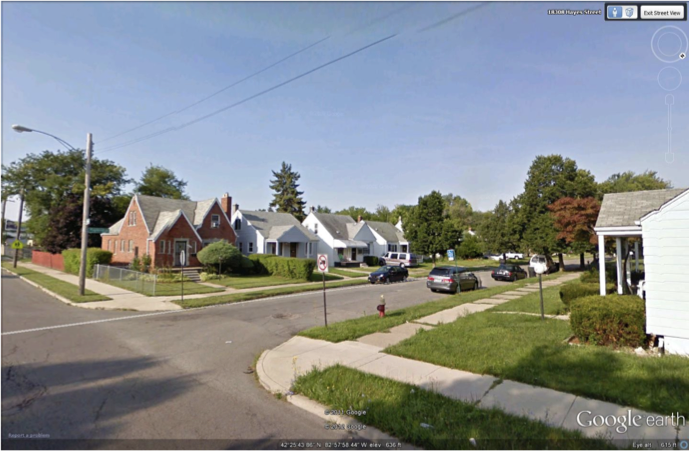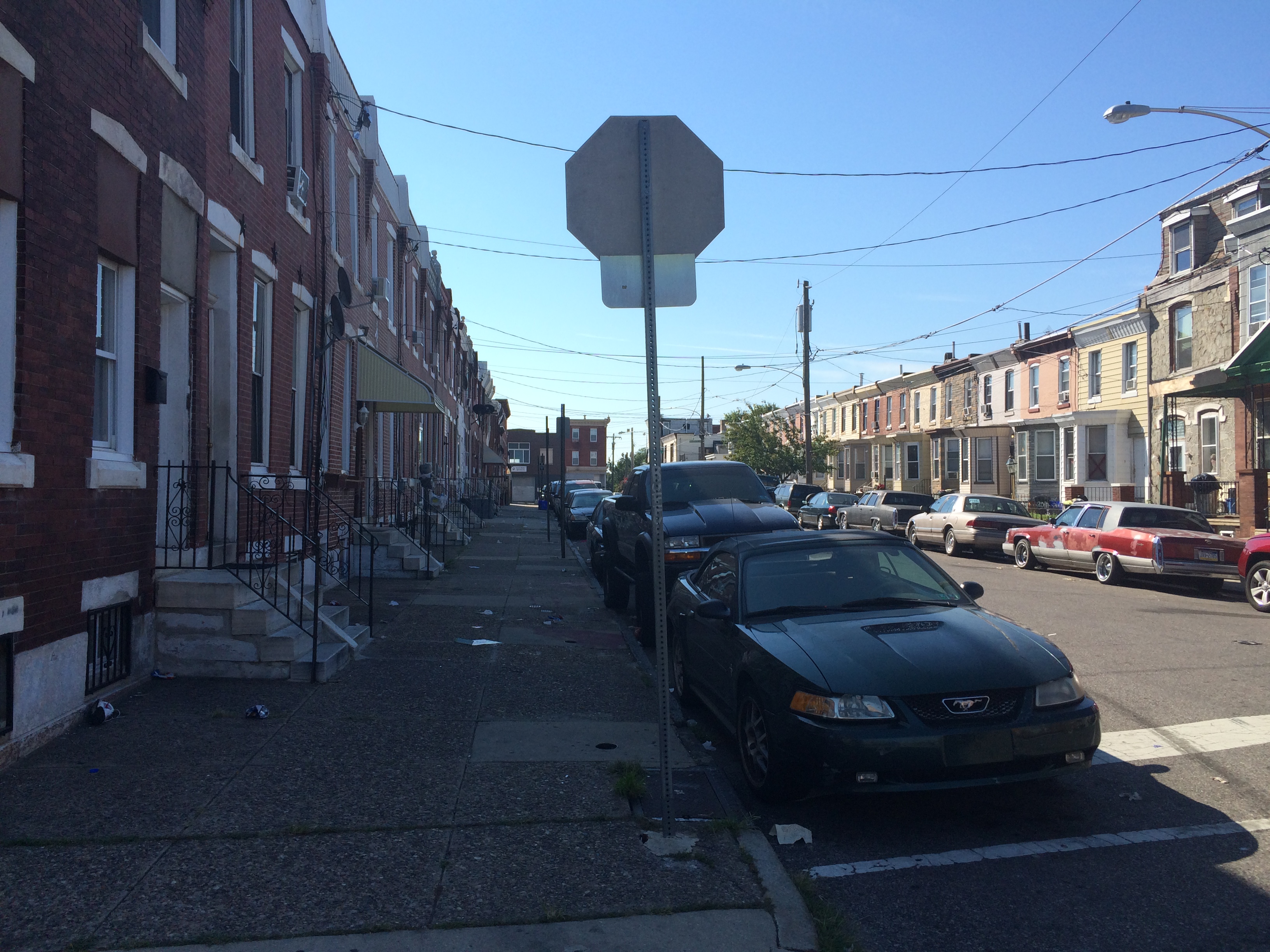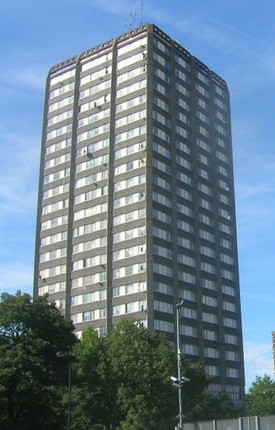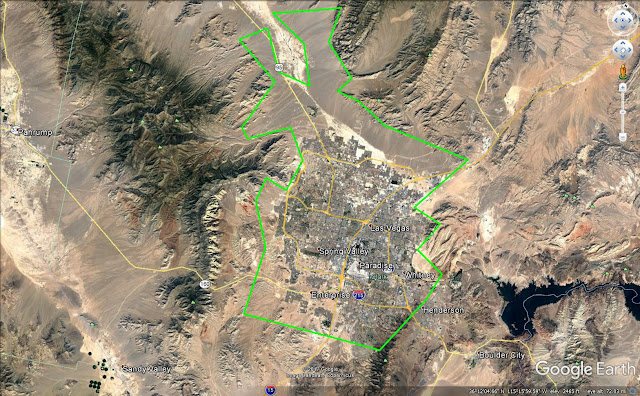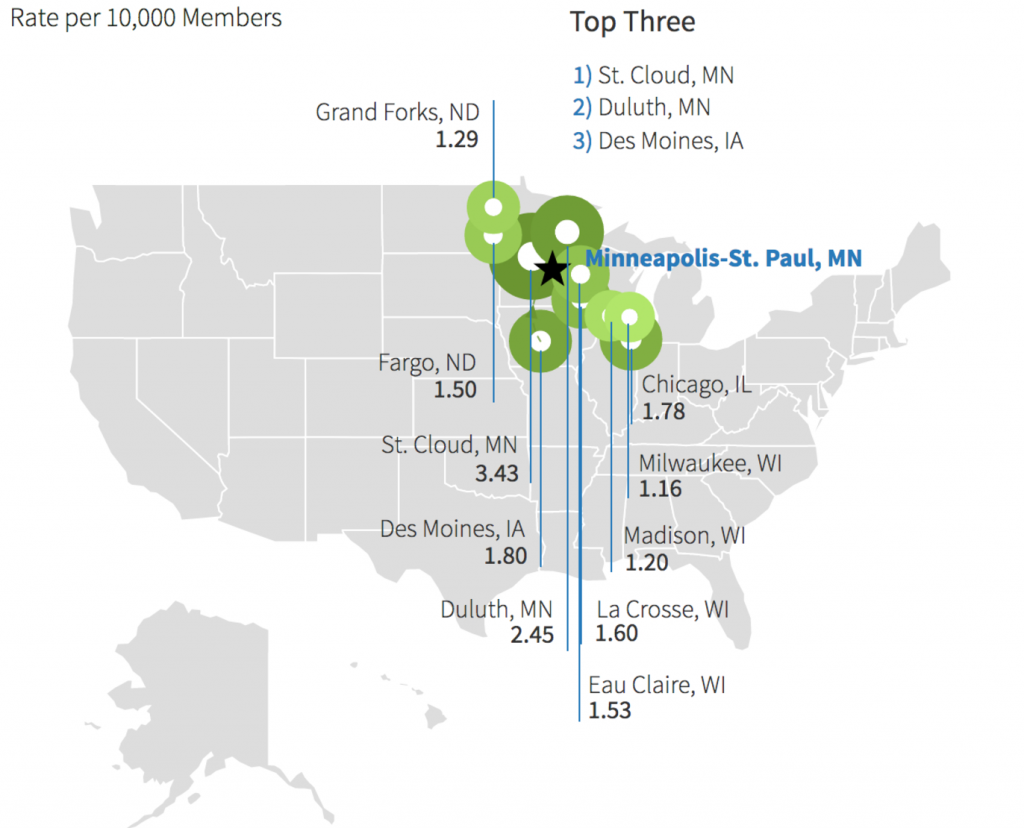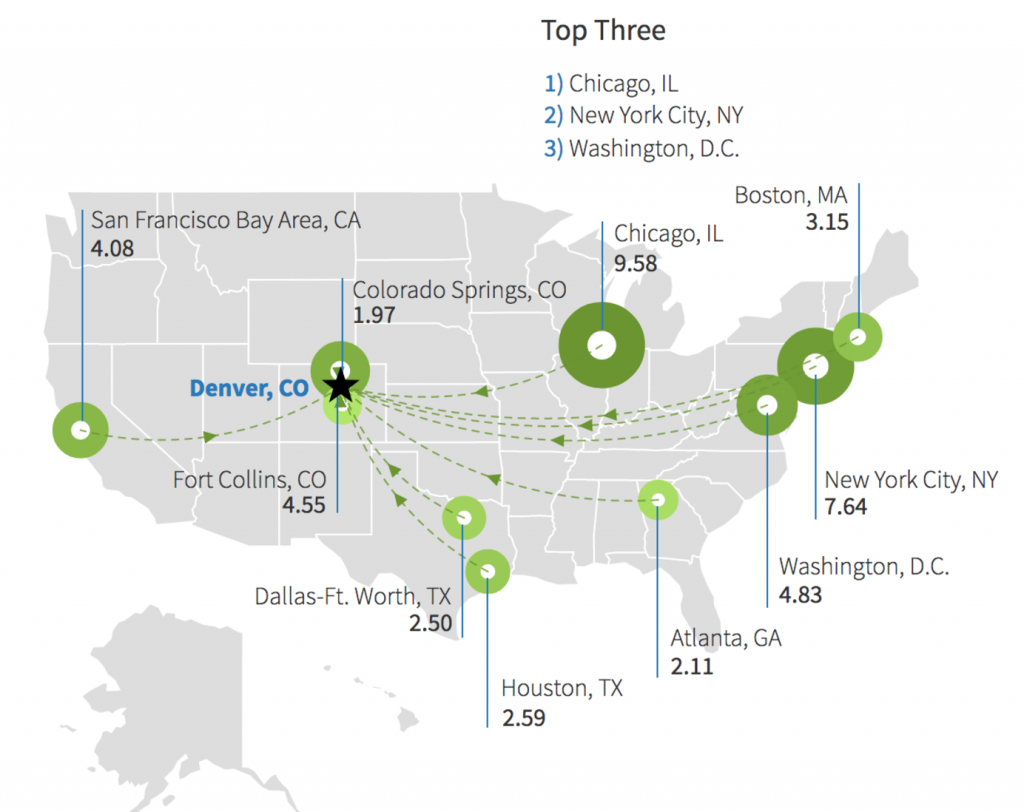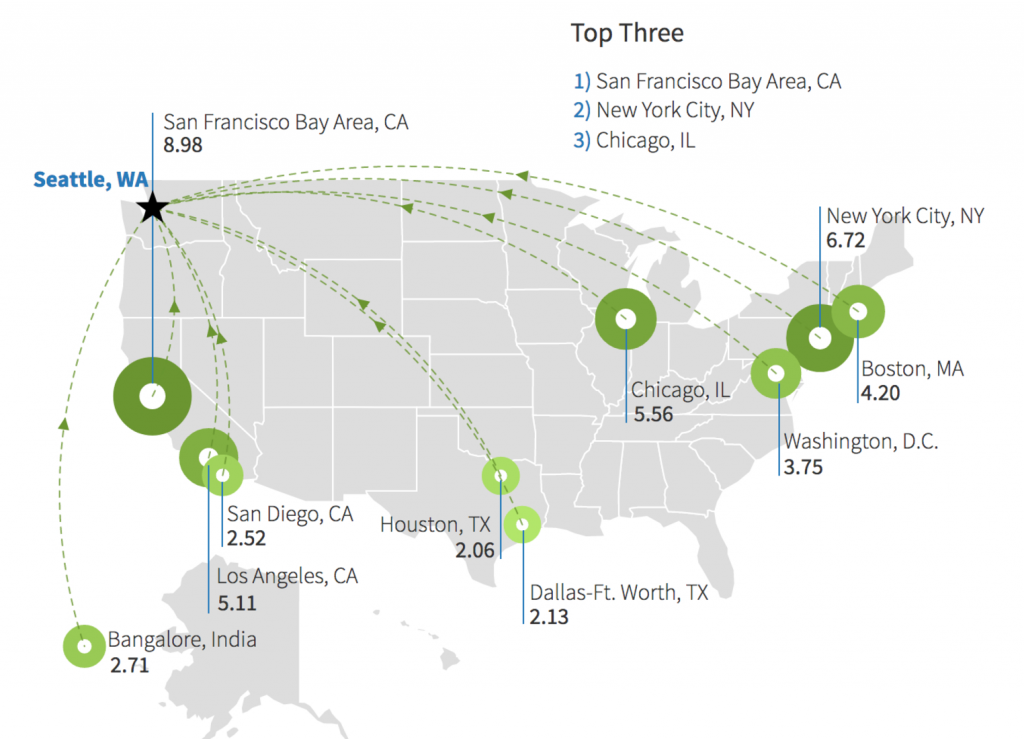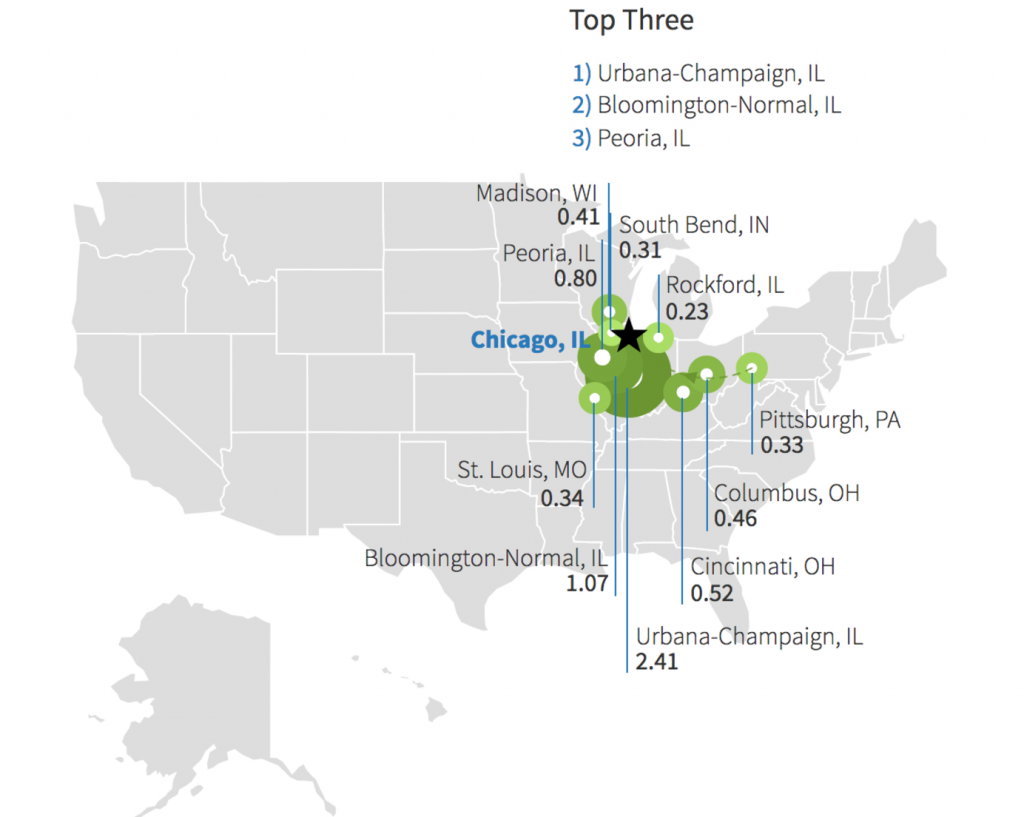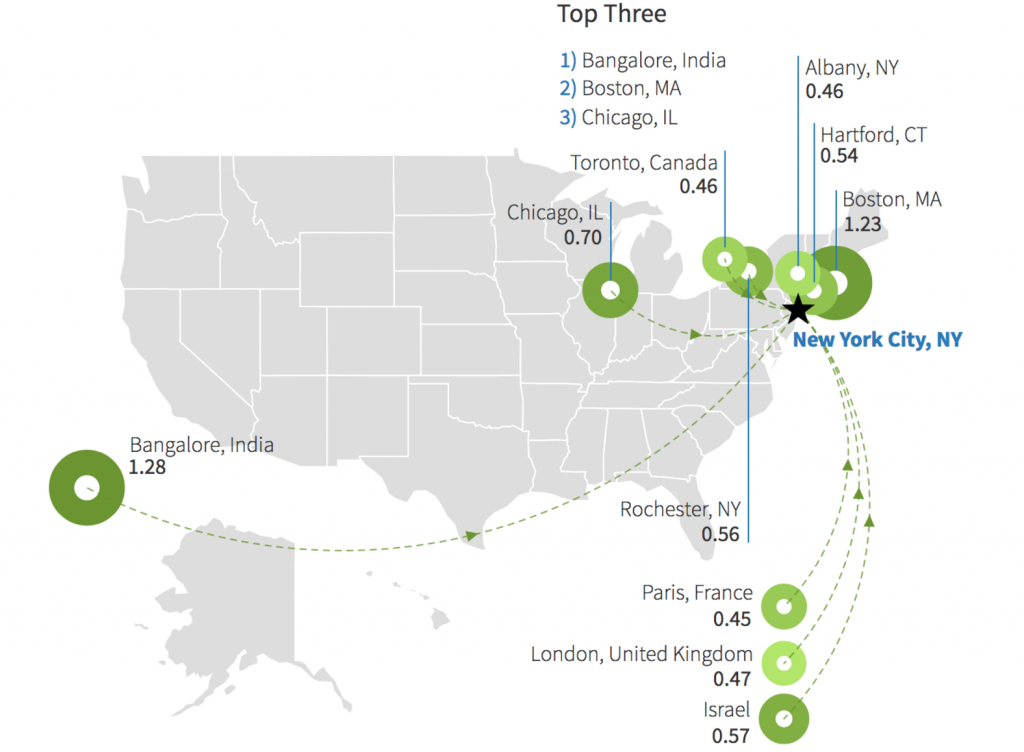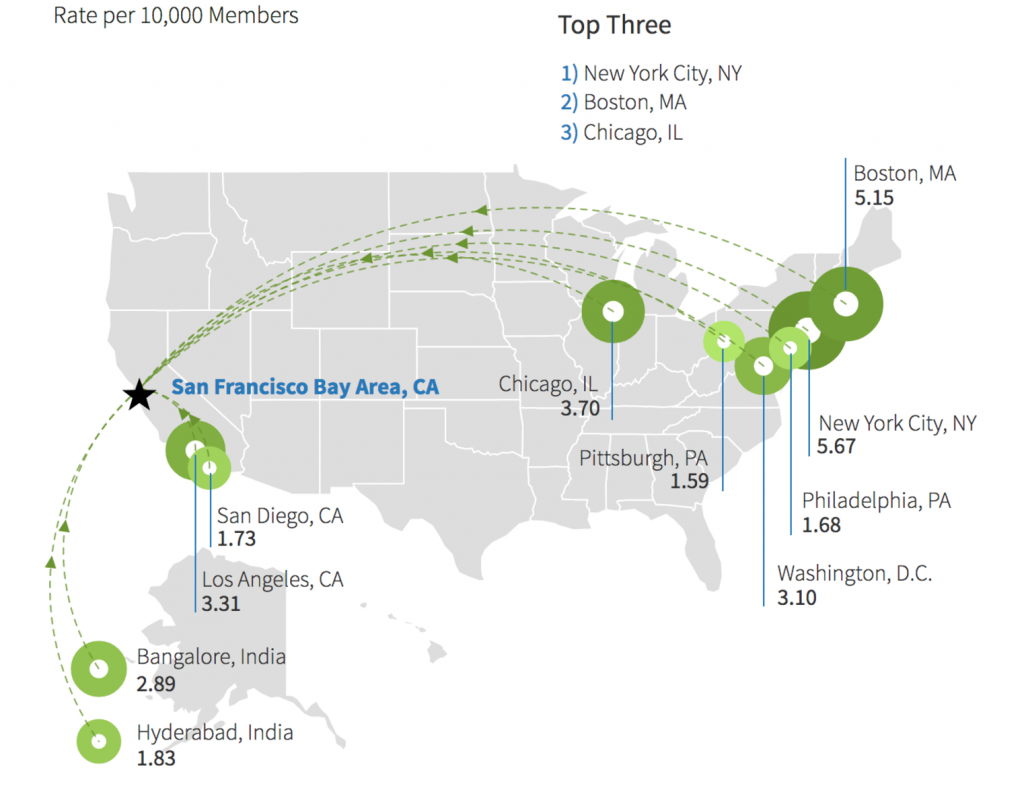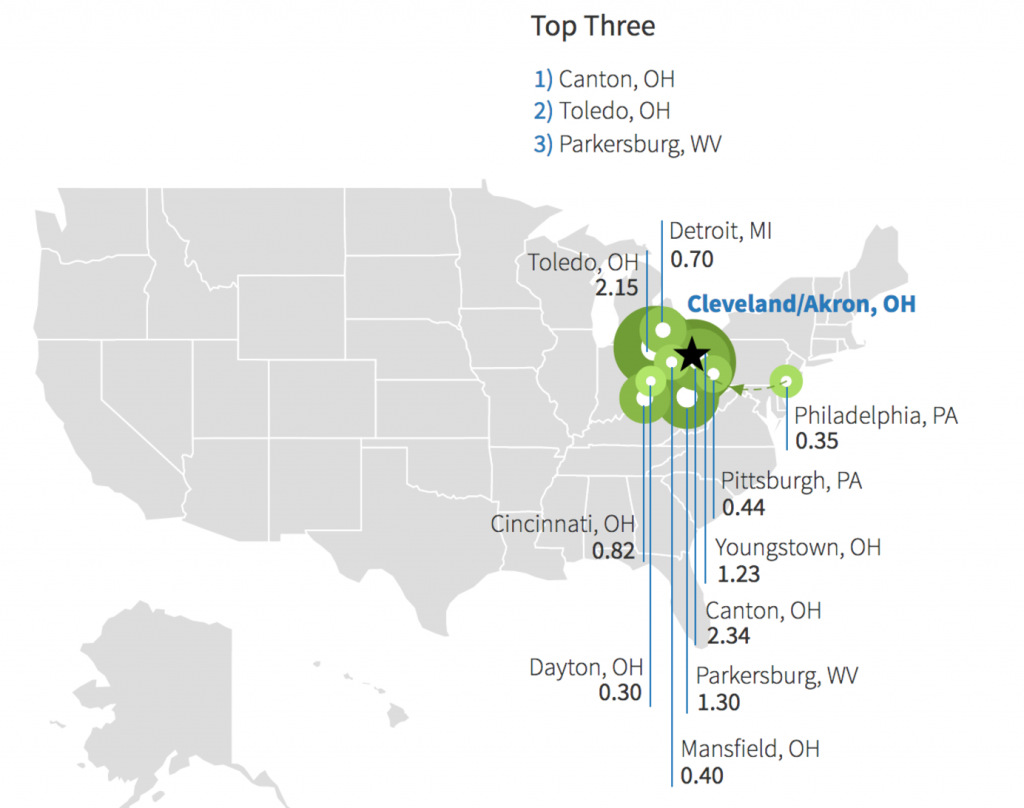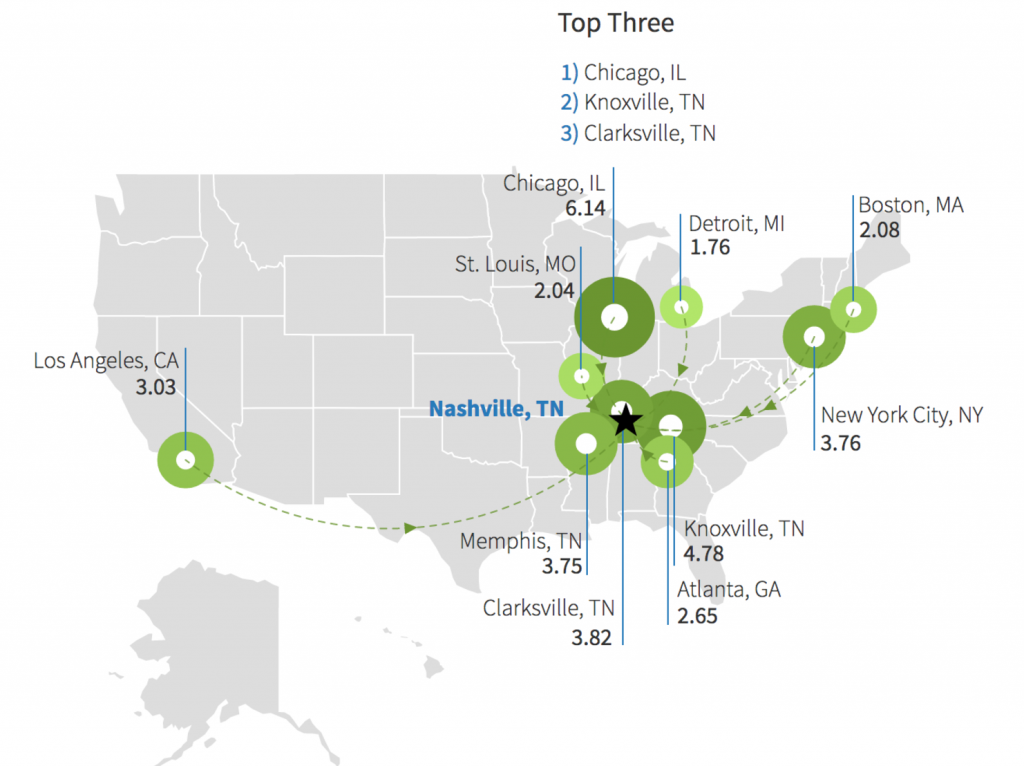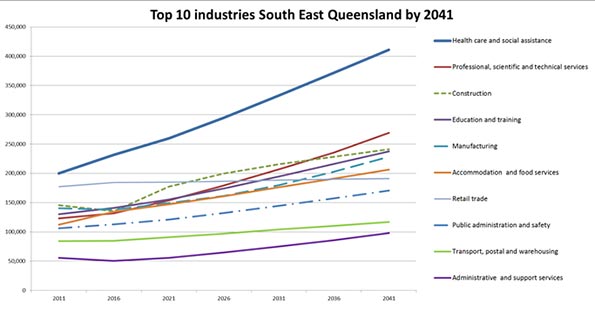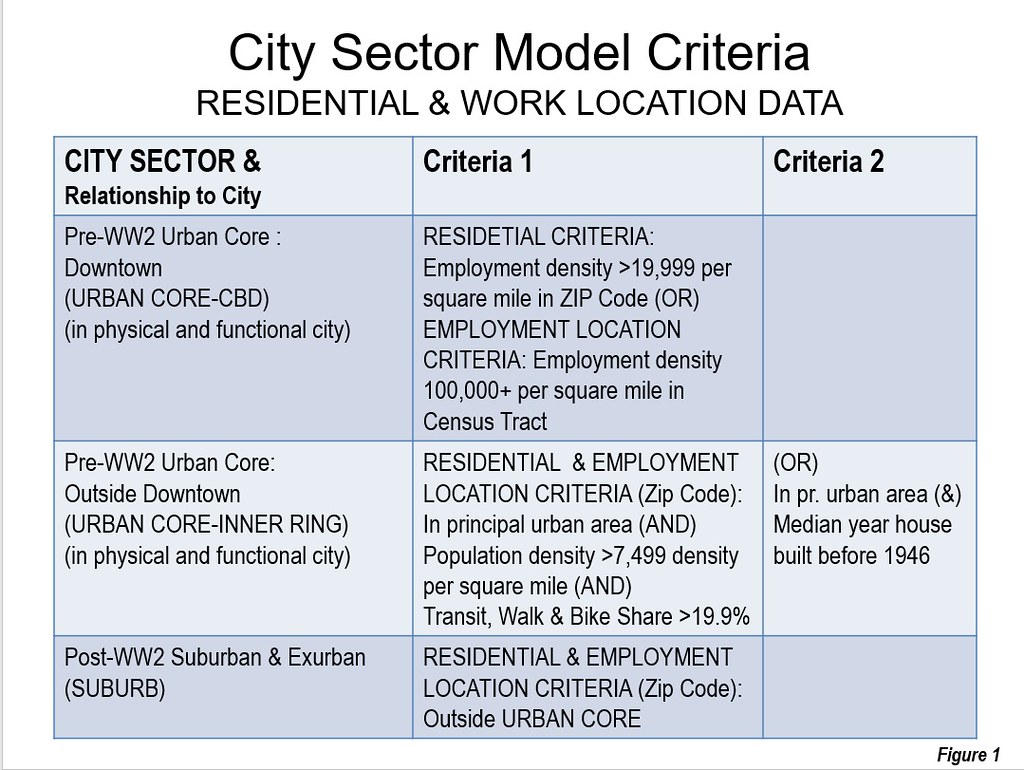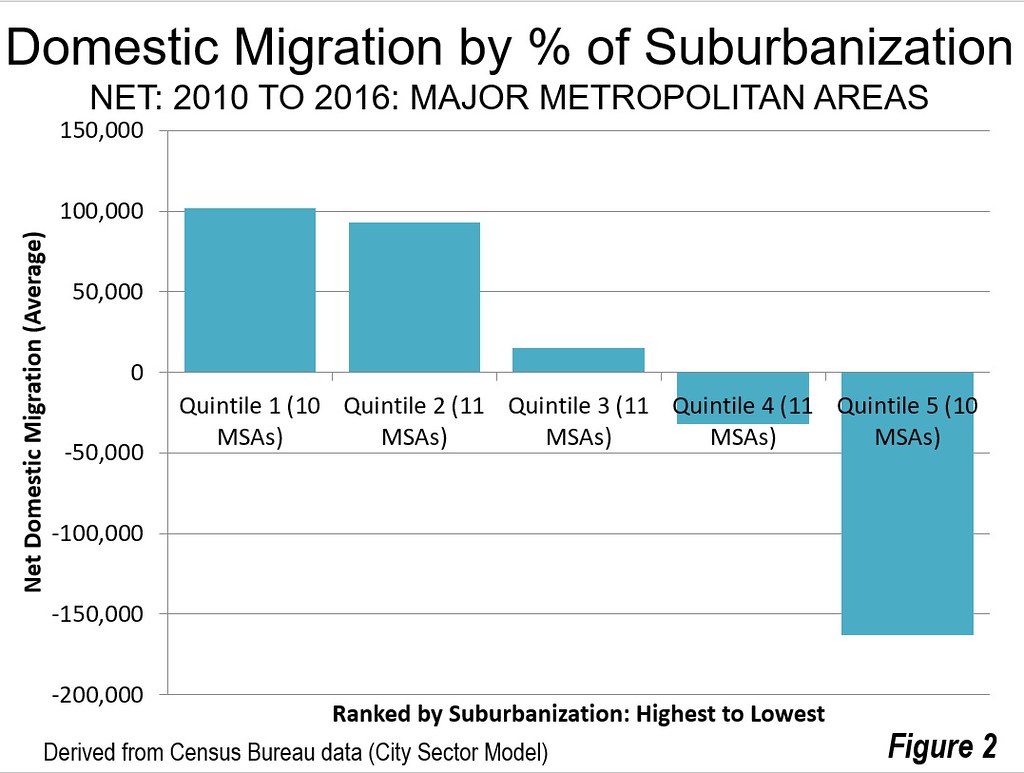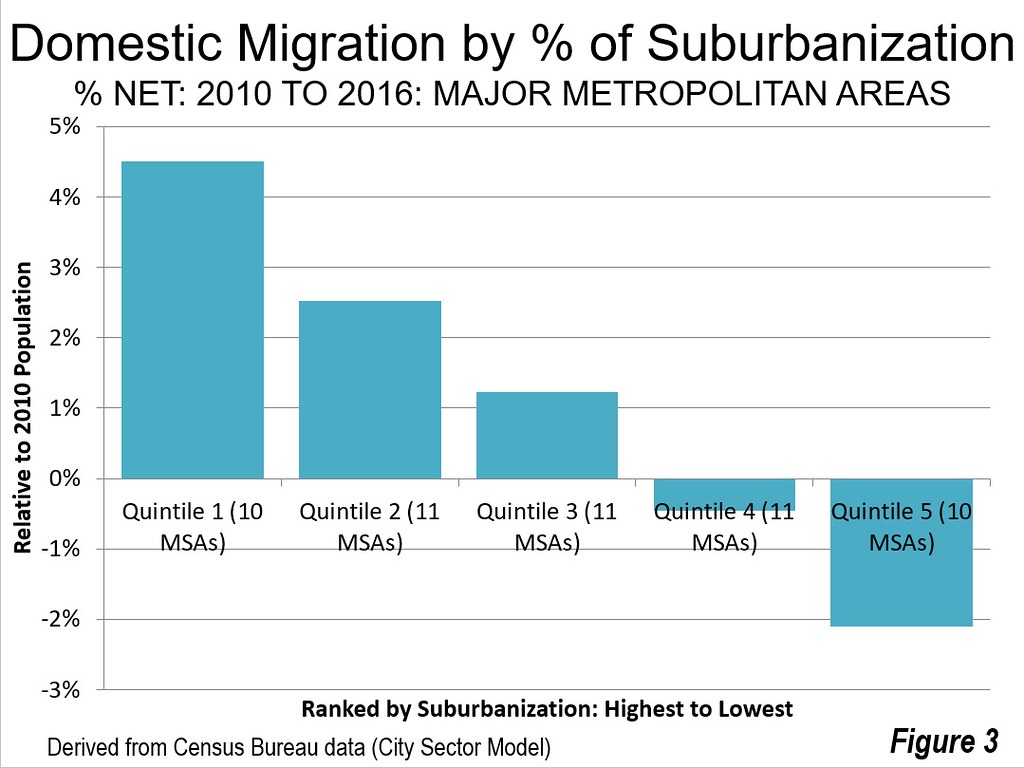America’s vast midsection, a region that has been hammered by globalists of both parties, has been abandoned by the great corporations that grew fat on its labor and resources.
To many from the Appalachians to the Rockies, Donald Trump projected a beacon of hope. Despite the conventional wisdom among the well-heeled of the great coastal cities, these resource and manufacturing hubs elected the new president.
Yet barely six months after his election, Trump is emerging as the latest politician to betray middle America.
Some of this is his awful management and communications style, which may well leave the country frozen until it is returned to the care of the coastal hegemons, tech oligarchs, high-level bureaucrats, academics, and media elitists whose views of the Heartland range from indifferent to hostile. The rise of China may have been a convenient source of cheap labor and more recently investment capital and lots of full load tuitions for universities, but according to the left-leaning Economic Policy Institute, our deficit cost the country 3.4 million jobs, most in manufacturing.
Trump’s trade rhetoric, like that of Bernie Sanders, excited the people and communities affected by these policies, but it remains questionable whether his own voters will benefit from his regime. Certainly the president’s tax proposals have been tailored to appeal to his billionaire friends more than the middle class. His health care reforms failed to prioritize those who feel threatened by loss of coverage, however much they gripe about the inanities of Obamacare.
Meanwhile promises that could help middle-America, like a massive infrastructure program, appear to be roadkill squashed beneath Trump’s staggering ineptitude and his Republican Party’s dysfunction.
There is no chance he will succeed in convincing voters he’s making America great again, let alone in actually doing so, if he cannot address the reasons why companies desert our towns and cities for all but elite functions, leaving so much of America in tatters.
A Failed Peasant’s Revolt
In its incoherence and lack of organization, Trump’s victory less resembled a modern social movement than a peasant’s revolt from the Middle Ages. His campaign lacked a coherent program, although its messenger, a New York narcissist, possessed a sixth sense that people “out there” were angry. Trump’s message was negative largely because he had nothing positive to say, though that had the useful effect of driving his enemies slightly insane.
So while he’s succeeded in stirring the blue hornet’s nest, he’s created no productive movement. Successful social movements—the Jacksonians, the New Dealers, the Reaganites, and the European social democrats—directly appealed to the working class with policies that for better or worse, challenged the existing social and economic hierarchy.
Trump, like Jackson, identified with the plight of the “left behind” America, notably rural areas and small towns that have seen their business communities shrink, while larger metropolitan areas have grown much faster. The new economic order, evident throughout the Obama era, represents what urban analyst Aaron Ren describes as “the decoupling of success in America. Those who are succeeding in America no longer need the overall prosperity of the country to personally do well. They can become enriched as a small, albeit sizable, minority.”
Trump brilliantly played off this geographic and class segmentation. But unlike others who successfully played populist themes, Trump did not emerge from and understand the mindset of those further down the social order, as did Jackson, Lincoln, Truman, Reagan, Nixon, and Bill Clinton. Trump simply stoked resentments, many but not all well-justified.
Trump has taken few concrete steps to address the causes of his supporters’ distress. Changes in trade negotiations and jawboning corporations are good first steps but limited in their effect. There is little in what he’s proposed since January that would help the middle and working class. Unlike Reagan, who cut rates across the board, Trump seems to be listening mostly to the Goldman Sachs grandees to whom he has entrusted our economy.
In the end Trump’s modern-day peasants will be left stranded like the supporters of European peasant rebellions of the European middle ages, like England’s Jack Cade in the 15th century, or the Taiping rebels in mid-19th century China. These movements grew bright, stormed across the countryside, and conquered cities, until the forces or order imposed themselves and eliminated the most rebellious of their subjects. Hong Xiuquan, the leader of the Taiping, committed suicide in 1864, as the 14-year rebellion failed. Cade, of course, was killed, as recounted in Shakespeare’s Henry the 6th, still proud of his “unconquered soul” but nevertheless despised by the ruling classes.
The Revenge of the Clerisy
Trump, of course, won’t end up executed, but simply excommunicated from polite society. He will creep back to his Manhattan keep, surrounded by gold and glitter, celebrated by as many retainers as he can afford. The same, however, cannot be said for those who rallied to his cause in the thus-far unrealized hopes that we could protect them from the cognoscenti’s plans to refashion, and largely diminish, ordinary American’s daily lives and economic prospects.
Trump’s faltering rebellion has been manna from heaven for the same swamp people—in both parties—who have been steering our democratic republic toward feudalism for a generation. Their ideology, notes author Michael Lind, sees themselves as a deserving meritocracy rather than a reflection of the persistence of social class.
In the end, Trump may succeed in doing something that, a few months ago, would have seemed impossible. He has elevated the very people who concocted policies, from “free trade” to open borders to the wars of the Middle East and Obamacare, that alienated millions of Americans. He has woken up the entire apparatus, from the CIA and FBI to the State Department and the EPA, who now send their insider effluence to the remaining journalists who consider bringing down the president as the new crusade.
It is not too much of an exaggeration that the media is now a fundamental part of progressive clerisy. According to the Center for Public Integrity, 96 percent of all media outlet donations went to Hillary Clinton last year. This process has been accelerated by the shift of media to an ever smaller, and ever more blue series of cities. More than half of all journalism jobs are now in cities which Clinton won by over 30 points; in 2008 they had less than a third.
This may explain why celebrating and even being participants in the “deep state resistance”—which would seem to be contrary to traditional liberal views about popular sovereignty—has become a critical part of the media messaging. Yet, particularly after Trump, the clerisy no longer feels it needs to contain its contempt for the population. One does not have to be a Trump supporter to see the long-term dangers to democratic governance from over-empowered civil servants openly contemptuous of voters and the people they vote for.
Over the next few years, Trump’s failure will elevate these “experts” who, in the anti-expert Trump, have found a perfect foil. Every time the president, or his minions, say something stupid (which is often), the talking heads and academics can harrumph about how the country should be run by Ph.D.s and J.D.s who, they feel, should direct rule on the unruly masses from above. To combat them, Trump lacks the eloquence of a Reagan, or the ferocity of a Jackson.
Oligarchs Restored
The notion of “Making America Great Again” had its flaws, but appealed to people who hoped to see middle-class jobs return to the country. It energized the suburbs and small cities who now find themselves led by an incompetent leader who appears to have used them, like patrons of a casino. Lured by an image of glamour they will find their wallets lightened rather than their spirits lifted.
The big winners long-term as Trump fails to deliver will be the country’s emergent tech oligarchy. Allied with the clerisy, and with an expanding, soon to be dominant, role in the media, they will create the conditions and define the future culture. Hollywood and Wall Street will be partners, but the nerds of the Valley will rule the economy.
To be sure automation and digitization brings many benefits, but Silicon Valley firms have secured advantage for reasons beyond being technically adept. Firms like Apple pay little in the way of taxes (thanks as much to Republicans as Democrats), and companies like Google manage to avoid anti-trust action. The rules are different for the oligarchs; they can afford to raise money without making a profit, as was the case of Amazon, Uber, and others. The shop on Main Street, or the store owner in the strip mall, enjoy no such advantage.
It is almost impossible to overestimate the power of these corporations. Apple alone for example has more cash on hand than the total reserves of both the United Kingdom and Canada. Four of the world’s richest people come from either the Seattle or Silicon Valley tech community. More important for the future, techno-nerds account for the most of 23 American billionaires under 40; 12 live in San Francisco, the de facto blue capital, alone.
The triumph of the oligarchs may spell the end of America as we have known it. Increasingly the core functions—and the big rewards—are concentrated in fewer hands and in fewer places. The distress being felt in rural areas and second-tier cities has its roots in globalization which, as Chicago sociologist Richard Longworth suggested two decades ago, undermines the industrial and routine business functions while boosting the already fantastic wealth of top echelon of executives, and those who serve them.
To keep the voters and the people they vote for at bay, the oligarchs will make common cause with the social justice warriors (as we saw during the election) and the greens to confine and control the terms of our national conversation as they work to expand and enforce a neo-feudal order.
The hoi polloi? They will get a stipend from the wealth generated by the oligarchs like Mark Zuckerberg. Likely not enough to start a business or own a home, but good enough to stave off homelessness or starvation. Silicon Valley and its media tools will forge a generation plugged into its phone but that owns little, and spends its limited capital on media, gadgets, and other idle pursuits. Americans will become more like a nature of serfs, their daily bread dependent on the kindness of their betters, their iPhone serving as both the new confessional and ephemeral town square.
This is precisely the America that Trump’s supporters sought to prevent, but may soon be stuck with. Not because the middle and working class has failed, but because Trump, due to his dysfunctional ways and inborn class biases, has betrayed the very people who put him in office.
This piece originally appeared on The Daily Beast.
Joel Kotkin is executive editor of NewGeography.com. He is the Roger Hobbs Distinguished Fellow in Urban Studies at Chapman University and executive director of the Houston-based Center for Opportunity Urbanism. His newest book is The Human City: Urbanism for the rest of us. He is also author of The New Class Conflict, The City: A Global History, and The Next Hundred Million: America in 2050. He lives in Orange County, CA.
Photo by Jax House, via Flickr, using CC License.


